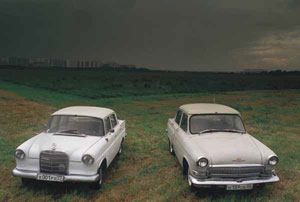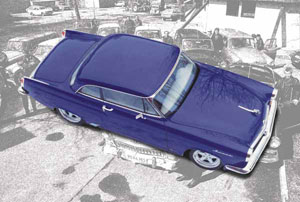Test drive GAZ 21 Volga 1956-1970 sedan
Thirty years without a Volga
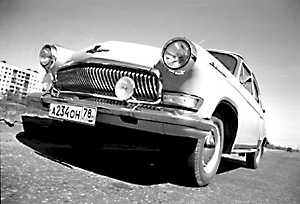 Even the current younger generation, which is just not accused of - from spirituality to degeneration at the genetic level, knows well classic Soviet films, where GAZ -21 often appeared, and only therefore joins general delights at the sight of a well -groomed Volga.
Even the current younger generation, which is just not accused of - from spirituality to degeneration at the genetic level, knows well classic Soviet films, where GAZ -21 often appeared, and only therefore joins general delights at the sight of a well -groomed Volga. Among the domestic motorists, quite stable groups have developed - however, differing both in the composition and numbers - fans of certain machines: some consider the most adapted to our conditions the Niva, others are convinced that nothing is better created, and others are better than Mercedes, and others are better Throughout their lives, they have been dreaming of open Chevrolet Corvette. As they say, they do not argue about tastes. But there are cars that use literally universal reverence, equally touching the hearts of the owners of shaggy Lada, the owners of luxurious foreign cars and even non -grooming fellow citizens. Of course, they can be counted on the fingers, however, in this honorary list there was a place for Russian, more precisely, Soviet models - we are talking about victory and the very first Volga, cult machines and gained love truly popular. Even the current younger generation, which is just not accused of - from spirituality to degeneration at the genetic level, knows well classic Soviet films, where GAZ -21 often appeared, and only therefore joins general delights at the sight of a well -groomed Volga.
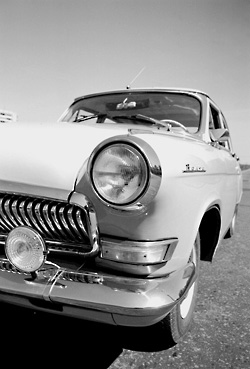 The Gorky Plant began designing a new machine after the death of Stalin, when seven years have passed since the beginning of Victory. The development of the car was a stunning pace: the team led by the designers Borisov and Nevzorov, after some five months, prepared a running prototype, and even a year later, three Volga went to state tests. By that time, the main features of the characteristic appearance of the GAZ -21 have already been formed, for which special thanks to another father of the car - Lev Yeremeyev. He was the author of a well -known rapid figure of a deer that decorates the hood of the early Volg. So, tests behind, the car seems to be ready, now the time comes to re -equip the plant for its production. This stage took a long year and a half from the Gorky residents, and the first industrial batch of cars left the conveyor only in early October 1956. Suppose a party - it is strongly said: it consisted of only three copies. Well, the beginning of the mass release was timed, as befits an important event. No manage to the CPSU congress, no matter how they tried, I had to focus on the World Youth and Students Festival, which opened in Moscow in the summer of 1957. The first of those who went to a series of modifications was called GAZ-21B. The engine was installed on the car from the victory with the lower location of the valves, the working volume of which was increased from 2112 cubes to 2432, as a result of which its capacity increased from 52 to 65 horsepower. The engine brought the rear wheels through a three -speed manual gearbox (hydromechanical transmission was not brought to mind at that time) and dispersed the car to 120 km/h. Like most American cars, the checkpoint lever was located at the Volga on the steering column. Of the other features of the design, we note the front lever shock absorbers - a curiosity today, a thing familiar in those days, and a centralized system for lubricating the suspension nodes.
The Gorky Plant began designing a new machine after the death of Stalin, when seven years have passed since the beginning of Victory. The development of the car was a stunning pace: the team led by the designers Borisov and Nevzorov, after some five months, prepared a running prototype, and even a year later, three Volga went to state tests. By that time, the main features of the characteristic appearance of the GAZ -21 have already been formed, for which special thanks to another father of the car - Lev Yeremeyev. He was the author of a well -known rapid figure of a deer that decorates the hood of the early Volg. So, tests behind, the car seems to be ready, now the time comes to re -equip the plant for its production. This stage took a long year and a half from the Gorky residents, and the first industrial batch of cars left the conveyor only in early October 1956. Suppose a party - it is strongly said: it consisted of only three copies. Well, the beginning of the mass release was timed, as befits an important event. No manage to the CPSU congress, no matter how they tried, I had to focus on the World Youth and Students Festival, which opened in Moscow in the summer of 1957. The first of those who went to a series of modifications was called GAZ-21B. The engine was installed on the car from the victory with the lower location of the valves, the working volume of which was increased from 2112 cubes to 2432, as a result of which its capacity increased from 52 to 65 horsepower. The engine brought the rear wheels through a three -speed manual gearbox (hydromechanical transmission was not brought to mind at that time) and dispersed the car to 120 km/h. Like most American cars, the checkpoint lever was located at the Volga on the steering column. Of the other features of the design, we note the front lever shock absorbers - a curiosity today, a thing familiar in those days, and a centralized system for lubricating the suspension nodes. By the fall, the gas began to produce a completely new engine, originally intended for the twenty -first. This four -cylinder upper engine with an aluminum alloy unit with a volume of 2445 cubic meters. cm developed a power of 65 liters. With.; Its commodity version had a power already 70 liters. With. And he was distinguished by an impressive, directly diesel torque - the peak of 167 Nm was at 2200 rpm. The maximum speed has increased: now it was 130 km/h, and the car accelerated up to 100 km/h in 35 seconds. The machine was produced in three performance - 21, 21A and 21V; As you guess, version A was equipped with the same three -speed hydromechanical box, which, after appropriate refinement, will later appear on the seagull. In other words, GAZ-21A became the first Soviet car with a full-fledged automatic.
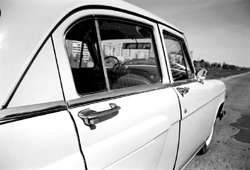 Alas, the harsh domestic reality put a cross on many advanced technical solutions that found use on the Volga. The low quality of the transmission fluid sharply reduced the life of the parts of the automatic checkpoint, and there was, in fact, to repair it. Problems with the tightness of a complex lubrication system led to the fact that she could not cope with the functions assigned to it. In turn, the gas management, instead of showing patience and achieving normal systems of systems, is a new matter, some defects have to be worried already on the go - preferred the lightest path, that is, to abandon them in general.
Alas, the harsh domestic reality put a cross on many advanced technical solutions that found use on the Volga. The low quality of the transmission fluid sharply reduced the life of the parts of the automatic checkpoint, and there was, in fact, to repair it. Problems with the tightness of a complex lubrication system led to the fact that she could not cope with the functions assigned to it. In turn, the gas management, instead of showing patience and achieving normal systems of systems, is a new matter, some defects have to be worried already on the go - preferred the lightest path, that is, to abandon them in general. In 1958, the Grand Prix received at a car exhibition in Brussels. As a rule, this event is given excessive meaning: they say, the car was so good that it was recognized almost the best in Europe. However, that act wore, rather, a political shade, because the jury awarded the entire booth of the USSR, on which a seagull and a LAZ-695B bus was also shown. And in his homeland, the car at the same time underwent cosmetic modernization, and the basic modification became 21i.
 From the machines of the first output, decorated with a radiator cladding of three horizontal bars with a star in the middle, the GAZ-21I was distinguished by a lattice with 16 vertical slots. The Volga’s appearance is again slightly transformed in 1962, when an expensive and extremely dangerous figure of a deer, the bumper will lose fangs, and the trunk lid hand will take the shape of a soaring seagull in the case of a hood on a pedestrian. Then the radiator grille will become 32-leafed, the front rotation indicators will be extended to the sidewalls of the wings; The lever shock absorbers in the front suspension will replace telescopic. Such Volga will be called GAZ-21L and cost a little more than five thousand post-reform rubles.
From the machines of the first output, decorated with a radiator cladding of three horizontal bars with a star in the middle, the GAZ-21I was distinguished by a lattice with 16 vertical slots. The Volga’s appearance is again slightly transformed in 1962, when an expensive and extremely dangerous figure of a deer, the bumper will lose fangs, and the trunk lid hand will take the shape of a soaring seagull in the case of a hood on a pedestrian. Then the radiator grille will become 32-leafed, the front rotation indicators will be extended to the sidewalls of the wings; The lever shock absorbers in the front suspension will replace telescopic. Such Volga will be called GAZ-21L and cost a little more than five thousand post-reform rubles. The machine will transfer the latest modernization in 1964, when the engine power increases to 75 horsepower, the design of the front-wheelbells of the front wheels will change, and the supporting elements of the body will be strengthened. The base GAZ-21R will last on the conveyor until July 15, 1970, when the gates of the plant leaves the last Volga of the first generation. In total, 640,000 GAZ-21 family machines were produced in 28 modifications, including universals 22 (they went on sale in 1962), and export 21Us with a powerful 85-horsepower engine (part of the cars with a two-colored body of the body), And even an exotic GAZ-23 with an eight-cylinder engine, an automatic gearbox and a seafrower hydraulic power steering. And Soviet experts who worked in Western Europe will bring the Volga with diesel engines home, the installation of which foreign dealers - gas partners were engaged, and will shock the audience on the gas stations with their inadequate actions. I don’t want to repeat the beaten truths, but you won’t get anywhere from them: yes, the twenty -first Volga came with the Khrushchev thaw and left with the onset of Brezhnev frosts. The car surrounded by an unchanged halo of romance is forever and remained in one of the most romantic periods of our history. Isn't this an explanation of our love for her?
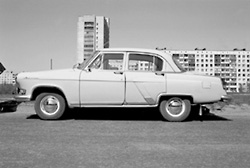 And here they did not guess. Anatoly Alekseevich Golovkin - by no means the first owner of the Volga shown in the photographs. Although you were not far from the truth - the second. Anatoly Alekseevich exceeded the driver’s experience in four decades, and he worked for many years with the Volga, in particular, he distilled the GAZ-22B station wagons for the ambulance service of Leningrad. And three years ago, an announcement of the sale of the twenty -first, as they say, first -hand, turned up. Let's go to see what kind of car, in what condition, although they did not experience any special illusions. The goods turned out to be the GAZ-21R of 1969 with a mileage of more than 200,000 km, which half managed to turn into ruins. The body is covered with rust, in some places through, the engine started only after long torment. But in the end, they agreed in price, and the Volga went to a new place of residence.
And here they did not guess. Anatoly Alekseevich Golovkin - by no means the first owner of the Volga shown in the photographs. Although you were not far from the truth - the second. Anatoly Alekseevich exceeded the driver’s experience in four decades, and he worked for many years with the Volga, in particular, he distilled the GAZ-22B station wagons for the ambulance service of Leningrad. And three years ago, an announcement of the sale of the twenty -first, as they say, first -hand, turned up. Let's go to see what kind of car, in what condition, although they did not experience any special illusions. The goods turned out to be the GAZ-21R of 1969 with a mileage of more than 200,000 km, which half managed to turn into ruins. The body is covered with rust, in some places through, the engine started only after long torment. But in the end, they agreed in price, and the Volga went to a new place of residence. The task was immediately maximum - to restore the car to its original appearance, using only native spare parts. Fortunately, it was simplified at the expense of two factors: firstly, the spare parts for GAZ-21 are not yet, no, but come across
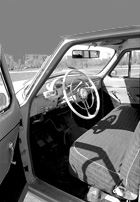 markets and stores, most often suburban. (There is information that in Moscow there are two wagons of spare parts from the state reserve, but no one is engaged in their implementation due to the lack of the opportunity to quickly get a lot of profit.) And secondly, the previous owner did not particularly mean technology, so he did not engage in deep repair Cars, that is, drove on it until she lost the ability to move. Suffice it to say that on some units of the car, factory seals have been preserved. The overhead of the engine revealed that the plates of all eight valves are destroyed as a result of detonation. The previous owner considered refueling the car with 92nd gasoline care for the health of the machine, in fact, she turned into a sudden death of the engine. The engine had to be replaced with UAZ, identical in design and technical data. Got the suspension. It is supposed to be regularly inspected and lubricated at ten points, and the frequency of service depends on weather conditions. It is not surprising that such a procedure was subjected to case to case, which directly affected the state of the suspension.
markets and stores, most often suburban. (There is information that in Moscow there are two wagons of spare parts from the state reserve, but no one is engaged in their implementation due to the lack of the opportunity to quickly get a lot of profit.) And secondly, the previous owner did not particularly mean technology, so he did not engage in deep repair Cars, that is, drove on it until she lost the ability to move. Suffice it to say that on some units of the car, factory seals have been preserved. The overhead of the engine revealed that the plates of all eight valves are destroyed as a result of detonation. The previous owner considered refueling the car with 92nd gasoline care for the health of the machine, in fact, she turned into a sudden death of the engine. The engine had to be replaced with UAZ, identical in design and technical data. Got the suspension. It is supposed to be regularly inspected and lubricated at ten points, and the frequency of service depends on weather conditions. It is not surprising that such a procedure was subjected to case to case, which directly affected the state of the suspension. As for the body, the Volga received new hoods, wings, thresholds (relatives rotted completely); The door, roof and trunk lid managed to return to life. Most chrome elements were replaced. The process of restoration of the interior turned out to be quite time -consuming - it is no secret that many of the very first -looking, very tough salons look at the outside. Finally, the car was repainted by imported enamel, made in accordance with all the canons of restoretorism: the paint was selected for a long time so that it was accurately repeated.
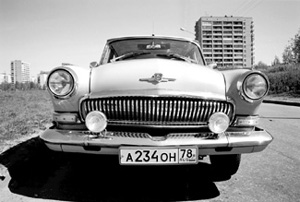 After receiving new license plates, the Volga went to the inspection. The first skeptical reaction of the traffic police officers upon closer examination quickly changed the confidence that probably there was nothing to complain here, and then the turn of purely sports interest came. And just like that, for the sake of entertainment, let's check the brakes? Moreover, the instrumental method is 29 years old! And the steering? As the car went through all the tests, the excitement of it was. And the adjustment of the light beam of the headlights? The Volga did not even fill up the control of the toxicity of the exhaust. It all ended like in the cinema - the gathered at the sight of the Gibedadeshniki demanded to make a monument from the car, a kind of standard of technical condition and the owner’s attitude to the car.
After receiving new license plates, the Volga went to the inspection. The first skeptical reaction of the traffic police officers upon closer examination quickly changed the confidence that probably there was nothing to complain here, and then the turn of purely sports interest came. And just like that, for the sake of entertainment, let's check the brakes? Moreover, the instrumental method is 29 years old! And the steering? As the car went through all the tests, the excitement of it was. And the adjustment of the light beam of the headlights? The Volga did not even fill up the control of the toxicity of the exhaust. It all ended like in the cinema - the gathered at the sight of the Gibedadeshniki demanded to make a monument from the car, a kind of standard of technical condition and the owner’s attitude to the car. Of course, in order to honor such tests, many months of hard work and attention to the smallest details are required. And not everyone has enough patience and patience to create a phoenix bird out of the remains. Therefore, I would like to thank Anatoly Alekseevich for bringing a particle of our history to us in its original form, albeit not so far away, and wish him health and his wonderful car.
P.S.: And Anatoly Alekseevich has another Volga, who has yet to do the revival
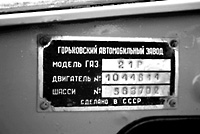

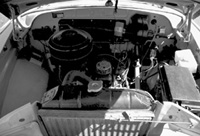

Source: Wheel magazine [No. 38/2000]



